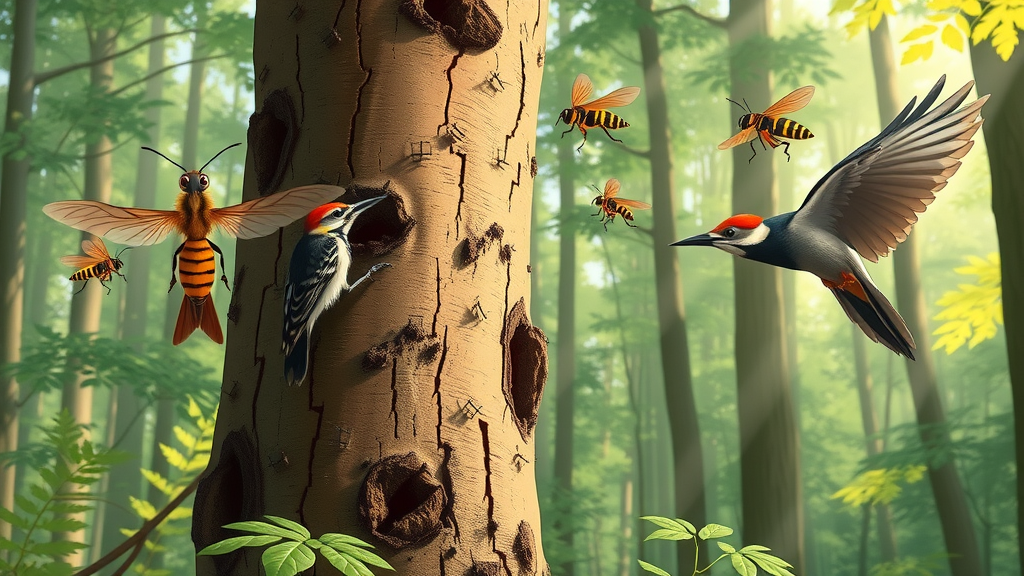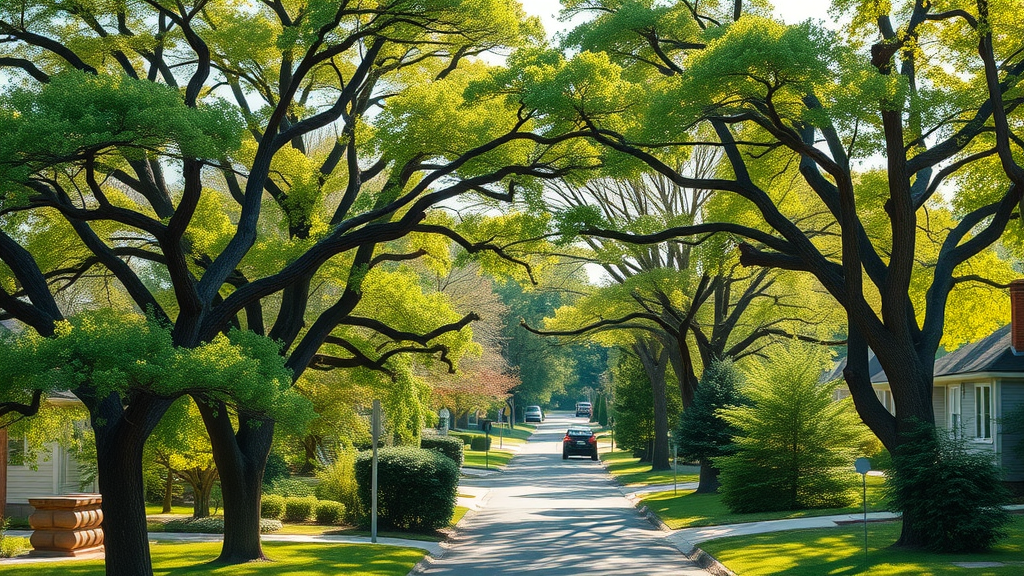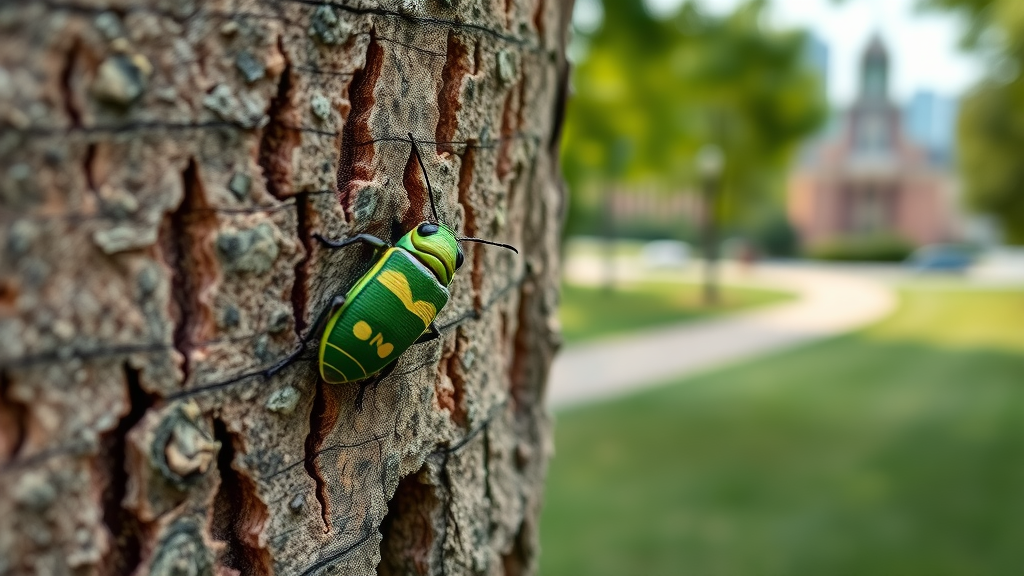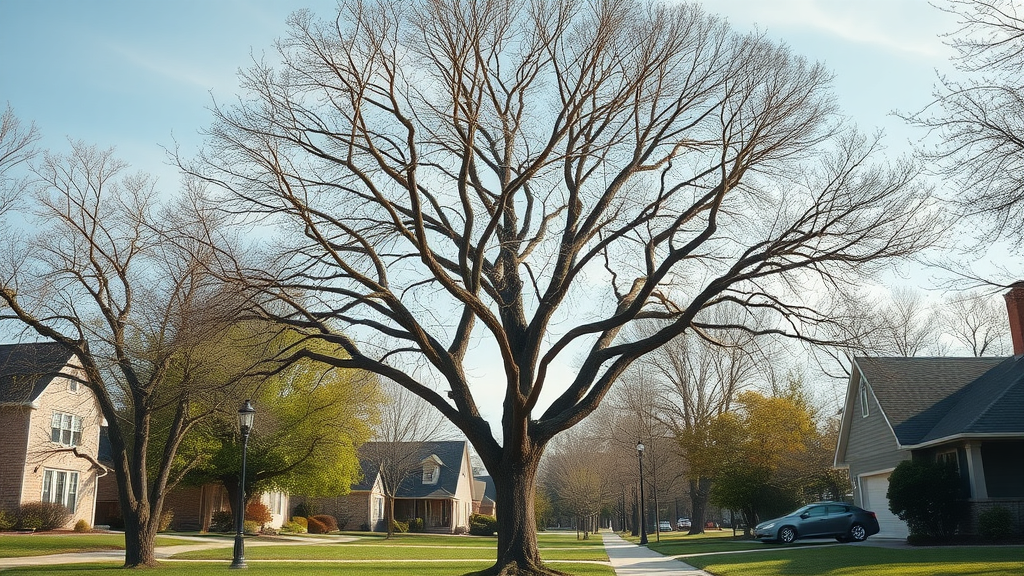Did you know that emerald ash borer infestations have destroyed over 100 million ash trees in North America and continue to threaten the landscape of neighborhoods across the United States? If you own or care for an ash tree , the risk and urgency to protect your trees have never been greater. This article equips you with the most effective techniques for preventing ash borer damage , uncovering actionable steps, rare facts, and tried-and-true practices that can bolster your defenses against these relentless invaders.

Did You Know Emerald Ash Borer Causes Billions in Ash Tree Losses?
The emerald ash borer (EAB) is far more than just another pest—it's responsible for catastrophic losses of ash trees across urban, suburban, and forested landscapes. Since first being detected in North America, the ash borer has swept through over 35 states, leaving behind devastating borer infestations that tax ecosystems, property values, and city budgets. For property owners and communities, understanding the true scope of damage is essential for mobilizing the right ash borer prevention strategies.
In recent years, preventing ash borer damage has become a top priority for city planners and conservationists. Statistics show that timely intervention —such as thorough monitoring and early adoption of effective insecticide treatments—can save up to 90% of high-risk ash trees. This means the stakes are high, but proactive action puts tree owners in a powerful position to fight back against this invasive pest. The following sections break down the facts and provide you with a roadmap to save your ash trees and landscapes for years to come.
Startling Facts About Emerald Ash Borer and Ash Borer Infestations
Ash borer infestations have destroyed over 100 million ash trees in North America.
The emerald ash borer is now detected in more than 35 states.
Timely prevention methods can save up to 90% of vulnerable ash trees.

Empowering You: What You'll Learn About Preventing Ash Borer Damage
Our comprehensive guide on preventing ash borer damage will arm you with practical strategies you can put into action immediately. Whether you're a homeowner with a single mature ash tree or a steward of community green spaces, you'll discover step-by-step solutions to address infestations and proactive care for ongoing protection.
Key strategies for tackling emerald ash borer and ash borers
How to identify signs of emerald ash borer infestation
Best insecticide treatment and alternative approaches
Steps to protect ash trees on your property
Answers to critical questions about emerald ash borers and prevention
Understanding Ash Borer and Emerald Ash Borer Risks
What Makes Emerald Ash Borer and Ash Borers So Dangerous?
The emerald ash borer has earned its reputation as one of the most destructive invasive insect pests in North America. Adults are small, metallic green beetles, but their real threat lies in the borer larva stage, which feeds just beneath the bark of ash trees. As these voracious larvae tunnel and feed, they disrupt the tree’s ability to transport water and nutrients, rapidly leading to canopy dieback and killing even healthy, mature ash trees in just a few years.
Unlike many other tree pests, emerald ash borers exclusively target all native ash species, including green, black, white, and blue ash. Their infestation spreads rapidly within and between communities, enabling regional outbreaks that can overwhelm entire urban forests. Since ash trees are prized for their shade and aesthetic value, unchecked borer infestations have heavy ecological and economic impacts, which makes identifying and stopping them absolutely critical.
How Do Ash Borers Invade Ash Trees and Cause Damage?
Ash borers begin their assault on ash trees by laying eggs on the bark. Upon hatching, the juvenile borer larva burrow through the bark of ash, creating S-shaped galleries beneath the surface. This hidden attack is particularly insidious: signs of EAB (emerald ash borer) damage are often difficult to detect until decline is advanced. The tree’s vascular system becomes clogged, resulting in progressive dieback from the top of the tree downward and eventually girdling the tree.
“Emerald ash borer can kill a healthy ash tree within 1–3 years if left untreated.” – USDA Forest Service
Understanding this life cycle is vital for early detection and implementing effective pest management strategies. Without timely intervention, even the healthiest trees can succumb to emerald ash borer infestation within just a few growing seasons.
Identifying Signs of Emerald Ash Borer Infestation in Ash Trees
Detecting Early Symptoms of Ash Borer Infestation
Successful preventing ash borer damage relies on the early identification of eab infestation. While the most recognizable sign is the D-shaped exit hole left by emerging adult beetle, several other clues signal the presence of a borer infestation. Homeowners and arborists should vigilantly inspect for declining leaves, irregular bark cracks, and unusual shoots arising at the tree’s base—a direct response to borer larva activity.
Crown dieback and thinning foliage
D-shaped exit holes in ash tree bark
S-shaped larval galleries beneath the bark
Epicormic shoots and bark splitting on ash trees
You may also find S-shaped tunnels under the bark of ash trees or splitting and flaking bark, where adult beetles and woodpeckers seek out larvae. In peak infestation, entire sections of canopy may turn bare while the lower trunk shows new epicormic growth, a desperate attempt by the tree to survive.

Best Techniques for Preventing Ash Borer Damage in Ash Trees
Routine Monitoring and Assessment of Trees on Your Property
Proactive, regular inspections are critical for preventing ash borer damage before it escalates. Walk the perimeter of your property and closely observe each ash tree, focusing on the bark, base, and canopy. Use a magnifying glass and look for the earliest signs—minute cracks, subtle leaf discoloration, or tiny D-shaped holes. Document findings and set reminders to repeat inspections seasonally, especially during the beetles’ active months from late spring through midsummer.
If you detect early indicators, contact a certified arborist specializing in emerald ash borer management for a thorough diagnosis. Early detection gives you a window to initiate insecticide treatment or other preventative measures, reducing the risk of losing valuable shade and mature landscape features to borer infestations.

Emerald Ash Borer Prevention Measures That Work
When it comes to ash tree care , success lies in combining several proven techniques. One of the most effective steps you can take is to diversify your property by planting ash borer-resistant tree species, reducing the risk that a single pest could wipe out all your shade trees.
Planting resistant tree species
Removing infested ash trees promptly
Practicing proper ash tree care and pruning
Remove and properly dispose of any infested ash immediately to prevent borers from spreading to nearby healthy trees. Prune ash trees to improve airflow and reduce stress, making them less appealing targets for emerald ash borers and other pests. Preventing ash borer damage is a long-term commitment; integrating these strategies with annual monitoring can significantly increase your success rate.
Insecticide Treatments for Emerald Ash Borer: What You Need to Know
Choosing Effective Insecticide Treatment for Ash Borers
Insecticide treatments are often the cornerstone of emerald ash borer prevention for high-value or mature ash trees. Choosing the right type of insecticide treatment depends on several factors, including the tree’s size, the severity of borer infestation, and environmental considerations. The three most common approaches—soil drench, trunk injection, and basal bark spray—target borers at different life stages, maximizing your tree’s chances for survival.
Treatment Type |
Best Use Case |
Application Timing |
|---|---|---|
Soil Drench |
Individual trees in residential areas |
Early spring |
Trunk Injection |
High-value trees or severe infestations |
Anytime pests are active |
Basal Bark Spray |
Young trees or preventive strategy |
Before egg hatch |

Safety and Environmental Considerations for Insecticide Treatments
While insecticide treatments such as those containing emamectin benzoate or systemic insecticides can be highly effective, always weigh their impact on surrounding wildlife, pollinators, and water sources. Consult with certified pest management professionals who follow Department of Agriculture guidelines for safe use, especially in residential spaces or near waterways.
Proper timing and professional application can minimize risks to non-target organisms while maximizing impacts on emerald ash borer larvae and adult beetles. Never exceed recommended dosages, and monitor treated areas for potential side effects. When possible, integrate chemical treatment with ongoing monitoring and non-chemical strategies for a more balanced, sustainable approach to preventing ash borer damage.
Exploring Non-Chemical Approaches to Prevent Ash Borer Infestation
Biological Controls and Natural Enemies of Emerald Ash Borer
Biological control offers environmentally-friendly alternatives for ash borer infestation prevention. Natural predators such as parasitic wasps and woodpeckers play a significant role in managing emerald ash borer populations. Several species of parasitic wasps have been introduced in North America specifically to target and reduce EAB larvae populations, providing ongoing, passive pest management as part of a proactive approach.

Encouraging these beneficial predators can be as simple as maintaining natural habitats and minimizing the use of broad-spectrum insecticides. While biological controls alone may not eradicate emerald ash borers, they add an additional layer of defense when used in conjunction with chemical or mechanical methods, significantly improving long-term control outcomes.
Integrated Pest Management Techniques for Ash Trees
Implementing Integrated Pest Management (IPM) means using a combination of cultural, biological, and chemical strategies to protect trees on your property. Start by monitoring ash tree health regularly, employing mechanical removal of infested limbs, and strategically using insecticides only when absolutely necessary. Rotate between prevention methods to keep pest populations guessing and reduce the chance of resistance.
An IPM approach helps maintain a healthier ecosystem, promoting ash borer-resistant tree species while minimizing negative side effects from excessive pesticide use. When paired with community vigilance and ongoing education, IPM greatly increases your chances of keeping valuable ash trees safe—and your property more resilient against future invasions.
Protecting Ash Trees and Your Landscape From Future Ash Borer Infestation
Community Vigilance and Reporting Emerald Ash Borers
The fight against emerald ash borer infestations isn’t just individual—it's collective. Community vigilance is paramount: report any suspected infestations to local forestry agencies or the Department of Agriculture. Collective monitoring provides real-time data to help experts track the pest’s movement and direct resources where they’re most needed.
Many towns and cities now offer hotlines or apps for residents to identify and report suspicious damage to ash trees. By working together and spreading awareness, communities can slow the spread of emerald ash borers, assisting authorities in protecting urban canopies and preserving property values.
Best Practices for Ash Tree Care
Healthy trees are more resilient. Maintain ash trees by providing adequate water during drought, properly mulching to retain moisture, and avoiding mechanical injury to roots or trunks. Regularly remove dead or broken limbs and inspect trees for signs of EAB infestation, especially during high-risk months.
Prioritize the care of valuable or heritage trees with appropriate insecticide treatments, while considering removing declining, compromised ash trees to prevent them serving as pest reservoirs. Investing in professional tree care will greatly increase your chances for success in preventing ash borer damage across your landscape.
People Also Ask: Can You Save a Tree With Ash Borer?
Practical Steps to Save Infected Ash Trees
It is possible to save an infested ash tree if you act quickly. The earlier a borer infestation is detected and treated—preferably with systemic insecticide or trunk injections—the greater the likelihood of saving the tree. Treatments must be started before canopy dieback has affected over 50% of the crown; after this point, recovery rates decrease significantly.
Follow up treatments every 1–2 years as recommended, and continue monitoring for new signs of EAB infestation. Combining chemical treatments with optimal tree care practices and removal of nearby infested ash increases the odds of rescuing partially damaged trees. Consult with an arborist for tailored recovery plans and ongoing monitoring.
People Also Ask: How Can We Prevent More Invasions From the Emerald Ash Borer?
Collaborative Prevention Strategies for Emerald Ash Borer
Preventing further invasions relies on a multi-tiered approach. Never transport firewood or cut ash wood from infested zones into non-affected areas, as this is a leading cause of spreading emerald ash borers. Help raise awareness in your community, teach others how to spot signs of EAB, and report findings to authorities for swift intervention.
Municipalities, property owners, and arborists must work together—coordinating treatments, sharing resources for public education campaigns, and replanting lost trees with more resilient species to break the chain of repetitive infestations. These collective actions form a robust barrier against new outbreaks.
People Also Ask: Is It Possible to Stop the Emerald Ash Borer From Getting to More Trees?
Methods to Limit Spread of Ash Borer Infestations
While eradicating emerald ash borers from an entire region may be unfeasible, their spread can be slowed or contained. Early removal and disposal of infested ash, judicious insecticide application, and restrictions on moving ash wood from known outbreak zones all play a role in limiting the reach of borer infestations.
On a local scale, quarantining and closely monitoring infested tree clusters, along with ongoing public reporting, are proven methods to limit further migration of emerald ash borers into healthy stands.
People Also Ask: What Repels Emerald Ash Borer?
Natural and Synthetic Repellents Against Emerald Ash Borer
Research is ongoing into effective repellents for emerald ash borer, but as of now, there are no widely available natural or synthetic substances that reliably prevent emerald ash borers from targeting ash trees. Systemic insecticides, particularly those administered through trunk injection, offer the most consistent chemical repellent effect. Maintaining tree health and removing infested trees quickly are still the best defense mechanisms.
Scientists continue investigating pheromone traps and plant-derived oils that may deter adult beetles, but these remain supplementary to mainline prevention practices rather than standalone solutions.
Video: How to Identify and Prevent Ash Borer Damage in Ash Trees
Video: Step-by-Step Insecticide Application for Emerald Ash Borer
Frequently Asked Questions on Preventing Ash Borer Damage
Can insecticide treatments save all ash trees, or only some? Insecticide treatments work best on healthy or minimally infested ash trees; trees with advanced canopy dieback may not recover. Early intervention and ongoing treatments enhance survival rates.
What is the best time of year to treat for emerald ash borer? Early spring, as trees leaf out, is ideal for systemic treatments. However, trunk injections and bark sprays may be applied whenever beetles are actively present.
How quickly do ash borers spread in a new area? Emerald ash borers can spread miles annually—often faster through the movement of infested wood. Early detection, rapid response, and community involvement are necessary to slow their expansion.
Are there alternative nonchemical solutions for smaller properties? Yes, biological controls like natural predators—along with prompt removal of infested ash—and regular monitoring offer chemical-free protection in limited settings.
How can I identify an emerald ash borer vs. other insects? Emerald ash borers are metallic green, slender beetles with a signature D-shaped exit hole in the bark; compare to other, more rounded beetle exit holes and differing larval galleries.
Key Statistics and Takeaways for Successful Ash Tree and Ash Borer Prevention
Prompt treatment can save up to 90% of at-risk trees
Integrated management increases success rates
Annual tree monitoring reduces loss
Take Action Now: Protect Your Ash Trees Against Future Damage
Act now: inspect your ash trees, report suspect damage, implement proven prevention, and partner with your community to keep your landscape thriving for generations to come.
 Add Row
Add Row  Add
Add 




Write A Comment